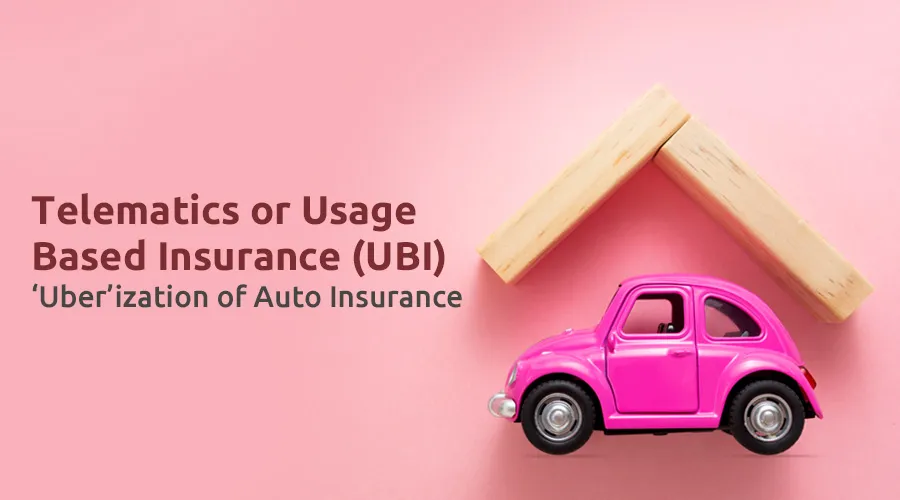In recent years, usage-based insurance (UBI) has emerged as a popular alternative to traditional auto insurance. By offering a more personalized and flexible approach to coverage, UBI allows drivers to pay premiums based on their actual driving behavior. This growing trend is transforming the way individuals approach auto insurance, making it more tailored and cost-effective. This article dives into the concept of usage-based insurance, its benefits, challenges, and how it’s changing the auto insurance landscape.
What is Usage-Based Insurance (UBI)?
Usage-based insurance is a type of car insurance where the premiums are determined by how much and how well you drive. Instead of a fixed monthly premium, UBI policies use data collected from telematics devices or smartphone apps to monitor driving behavior and adjust rates accordingly. Key factors such as distance driven, speed, braking habits, and time of day are typically considered in determining how much you pay.
Types of UBI Models
- Pay-As-You-Drive (PAYD): This model bases premiums on the number of miles driven. The more you drive, the higher your premium. This is ideal for people who use their car infrequently.
- Pay-How-You-Drive (PHYD): In this model, the focus is on how safely you drive. Factors like hard braking, acceleration, and speeding are monitored, and safe drivers are rewarded with lower premiums.
- Hybrid Models: Some UBI policies combine both mileage and driving behavior to calculate premiums, giving insurers a more comprehensive view of how you drive.
Why Is UBI Gaining Popularity?
1. Cost Savings for Safe Drivers
One of the most attractive aspects of UBI is the potential for cost savings, particularly for safe drivers. If you are a responsible driver who avoids harsh braking, speeding, or driving at night, UBI can help lower your premiums.
- How it works: Insurance companies monitor your driving habits and reward safe driving with lower rates. Conversely, risky behaviors like speeding or sudden stops may result in higher premiums.
- Benefit: UBI allows safe drivers to pay less, making it an appealing option for individuals who may feel they’re overpaying for traditional insurance.
2. Tailored Coverage
Unlike traditional auto insurance policies, which base premiums on factors such as age, gender, location, and vehicle type, UBI offers a more personalized approach. The premium reflects your actual driving behavior, providing a more accurate and fair price for coverage.
- How it works: Your insurer tracks your driving habits through a telematics device or app. This data allows them to customize your premium, ensuring you only pay for the coverage you need based on how you drive.
- Benefit: UBI offers a level of customization that is often not available with standard policies, making it ideal for low-mileage drivers or those who drive safely.
3. Environmental Impact
UBI can also contribute to reducing the environmental impact of driving. By monitoring driving habits, insurers can encourage more fuel-efficient and eco-friendly driving behavior.
- How it works: Some UBI programs incentivize drivers to drive in a more eco-friendly manner by offering discounts for practices such as reducing idle time or avoiding high-speed driving, which reduces fuel consumption.
- Benefit: Drivers can reduce their carbon footprint while also saving on their premiums.
4. Real-Time Data and Immediate Feedback
Another key benefit of UBI is the ability to receive real-time feedback about your driving habits. With telematics devices or apps, drivers can track their driving patterns and make adjustments immediately to improve safety and lower premiums.
- How it works: Many UBI programs provide drivers with detailed reports on their driving behavior, offering insights on how to improve. Some apps even send notifications if your driving habits could result in higher premiums.
- Benefit: Immediate feedback helps drivers improve their habits and potentially save money on their premiums, while also improving overall driving safety.
Benefits of Usage-Based Insurance
1. Lower Premiums for Low-Mileage Drivers
UBI is particularly beneficial for people who don’t drive frequently, such as city dwellers or retirees. Since UBI premiums are based on mileage, individuals who use their cars sparingly can often save significantly on premiums.
- How it works: Drivers who only drive occasionally, like those who work from home or use public transport, pay less since their mileage is low.
- Benefit: UBI can be a great option for those who don’t need the high coverage costs of traditional policies.
2. Encouragement for Safer Driving
UBI models like Pay-How-You-Drive (PHYD) encourage safer driving by offering incentives to avoid risky behaviors like speeding or sudden braking. The result is not just lower insurance premiums but also fewer accidents and claims.
- How it works: Insurers reward safe drivers by offering discounts for practices such as maintaining a consistent speed, avoiding hard braking, or staying within the speed limit.
- Benefit: Safer roads benefit everyone, and UBI plays a role in promoting responsible driving habits, which could reduce accident rates.
3. Flexibility for Changing Needs
UBI policies can adjust premiums based on changing driving patterns. For example, if your driving habits change—such as increasing your mileage due to a new job or relocating—your premiums will adjust accordingly.
- How it works: UBI allows for real-time adjustments to premiums based on your driving behavior, ensuring your coverage remains relevant to your lifestyle.
- Benefit: This flexibility ensures that your premium is always in line with your current driving habits, making UBI more adaptable to life changes than traditional policies.
Challenges of Usage-Based Insurance
1. Privacy Concerns
One of the major concerns with UBI is the level of personal data that insurers collect through telematics devices and apps. Drivers must be comfortable with sharing detailed information about their driving behavior, including location, speed, and driving patterns.
- How it works: Telematics devices collect and transmit data about your driving, which can be analyzed by insurers to set premiums.
- Concern: Some individuals may feel uneasy about the privacy implications of sharing such detailed data with insurance companies.
2. Increased Costs for Riskier Drivers
While safe drivers can enjoy lower premiums, those with riskier driving habits may face higher costs. If you engage in behaviors like speeding or frequent hard braking, your UBI premiums could rise.
- How it works: UBI policies track driving behavior and adjust premiums accordingly. Risky drivers are likely to see increased costs.
- Concern: For drivers who are less mindful of their habits or those who cannot easily change their driving behavior, UBI could lead to higher premiums.
3. Technology and Device Compatibility
Not all vehicles are compatible with UBI devices, and some people may not be comfortable with the technology required to participate. In some cases, a telematics device may not work well with certain cars or older models, limiting participation in UBI programs.
- How it works: UBI requires a telematics device or app that tracks your driving behavior. If your car doesn’t support this technology, you may not be able to participate.
- Concern: Those with older vehicles or without access to the necessary technology might be excluded from participating in UBI programs.
Is UBI Right for You?
While UBI offers several benefits, it’s not the right choice for everyone. To determine if usage-based insurance is a good fit for you, consider the following:
- Driving Habits: If you are a safe driver with low mileage, UBI could help you save money on your premiums.
- Comfort with Technology: You need to be comfortable with the idea of sharing your driving data and using telematics devices or apps.
- Potential for Cost Savings: If you drive frequently or engage in risky driving behaviors, UBI might lead to higher premiums. However, if you’re confident in your driving habits, you could save significantly.
Conclusion
Usage-based insurance is revolutionizing the auto insurance industry by offering a more personalized and cost-effective approach to coverage. With the ability to adjust premiums based on real driving behavior, UBI provides a flexible and fair way to insure your vehicle. While there are challenges, such as privacy concerns and increased costs for high-risk drivers, UBI is an excellent option for many individuals who prioritize savings, safety, and convenience. As technology continues to improve and UBI programs become more widespread, this trend is likely to shape the future of auto insurance for years to come.





